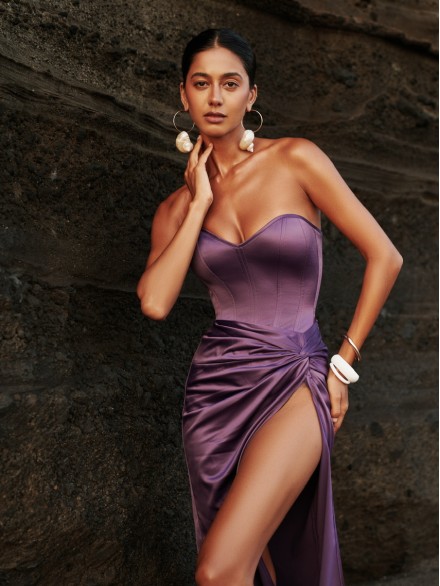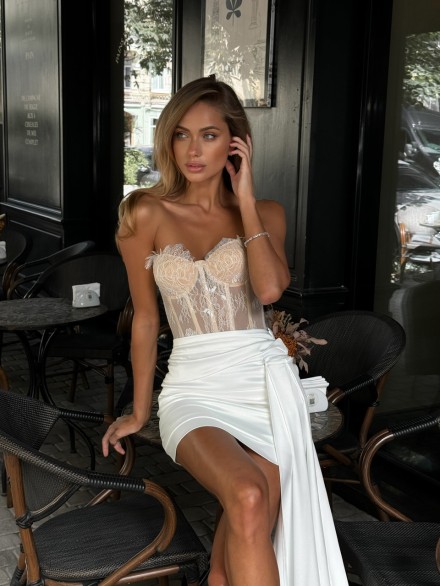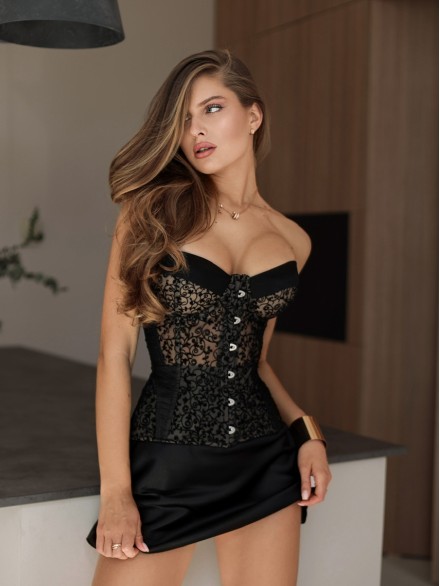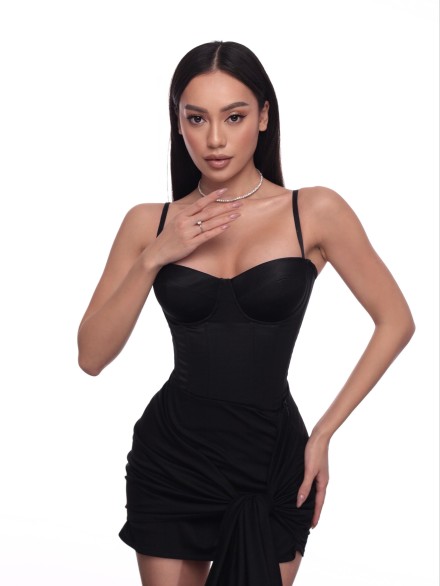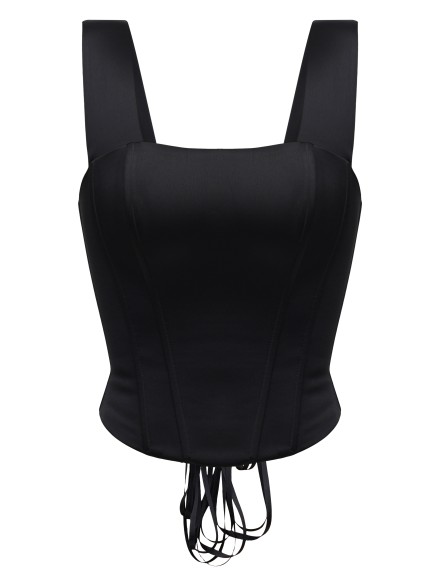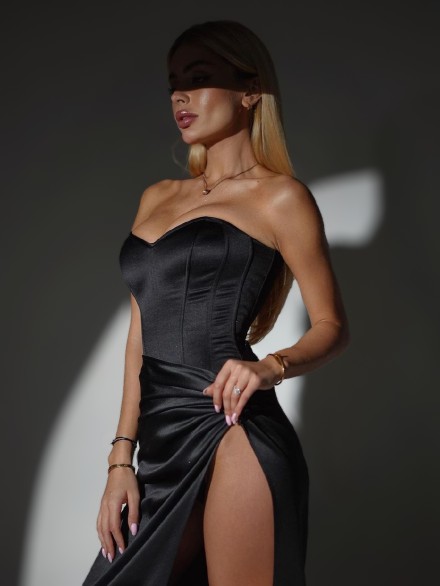Choosing the fabric for your wedding dress is one of the most important steps in creating the perfect look. The material sets the tone for the entire outfit, influencing its style, comfort, and even durability. Delicate silk, luxurious satin, airy tulle, or exquisite lace—each of these can create a unique aesthetic. However, to make the right choice, it's important to consider not only the visual qualities but also the properties of the fabric, its density, seasonality, and care requirements. In this guide, we at Tsarskaya have gathered the best materials for bridal dresses and helpful tips to help you make the right choice.
The Impact of Fabric on the Style and Comfort of Your Wedding DressThe fabric choice for your wedding collection is crucial to achieving the desired look and ensuring comfort throughout the day. The fabric affects the fit, drape, texture, and overall appearance of the dress. Some materials emphasize softness and lightness, while others highlight luxury and structure. It's important to consider the fabric’s characteristics to ensure the dress is both beautiful and comfortable for the occasion. Main Materials for Wedding DressesOf all the aspects of creating a wedding dress, fabric selection is the most important. Each material has unique characteristics that affect its appearance, style, and comfort. Here are the most common and popular wedding fabrics used for bridal gowns, along with their pros and cons. SilkSilk is a top-quality fabric known for its softness, sheen, and elegance. Silk dresses can create both classic and more refined styles. It feels great against the skin, and its light sheen adds sophistication and elegance to the dress. SatinSatin is an elegant and glossy fabric that looks expensive. It is often used for minimalist wedding dresses that highlight the beauty of the female figure. Satin holds its shape well due to its dense structure, making it a great choice for both classic and modern styles. TulleLight and breathable tulle is perfect for use as the top layer on skirts and other garments. Due to its semi-transparency, it looks romantic and delicate. Tulle is also commonly used to create voluminous and whimsical designs. LaceLace is a symbol of elegance and femininity. It adds sophistication and decorative elements to the dress. Depending on the pattern and thickness, lace can create a light or dense and structured effect. OrganzaOrganza is a dense yet transparent material used to create volume in a dress. It is frequently used to create voluminous skirts, trains, and decorative inserts. Embroidered or plain organza dresses add lightness and grace. How to Choose Fabric Based on the Wedding SeasonSummer WeddingsFor summer weddings, it is recommended to choose fabrics that provide comfort and allow the skin to breathe in the heat. The best fabrics for this purpose are silk, chiffon, and tulle. These materials are ideal for creating a light, airy, and romantic look. Winter WeddingsWinter weddings require heavier and warmer fabrics. Satin, velvet, and microdive are perfect options as they retain heat and look magnificent. Lace with a thick lining can also be used to create a unique style. The Importance of Fabric Density for Wedding DressesHow Fabric Density Affects the Fit of the DressThe density of the fabric directly influences how the dress will sit on the body. Light and transparent materials offer airiness and movement, while heavier fabrics create sharp lines and structured shapes. When choosing a dress, it’s important to consider what effect you want to achieve. Ideal Density for Different StylesDense fabrics like satin and organza are ideal for “Princess” and “Ball Gown” styles as they create volume. For elegant wedding dresses in Greek or “Mermaid” styles, silk and tulle are the best fabric choices. How to Care for Bridal Dress FabricsTips for Caring for Delicate FabricsWedding dresses are often made from delicate materials that require special care. These dresses should not be washed in a machine; they are best sent to professional dry cleaners. Also, protect satin wedding dresses from dust and damage with a special garment bag. Storing the Wedding Dress After the CeremonyAfter the wedding, the dress should be carefully folded into a breathable garment bag or hung on a hanger. Never use plastic garment bags as they can yellow over time. If stored in a cool, dry place, the fabric will remain intact. Common Mistakes When Choosing Fabric for a Wedding DressMistakes in Choosing Fabric Based on ColorSome fabrics can distort color under different lighting. For example, satin may appear overly shiny in the sunlight, while organza may lose its transparency. It’s important to assess the fabric under various light sources. Comfort Issues Due to Inappropriate FabricChoosing a fabric that is not suitable for the weather or sensitive skin can lead to discomfort. For instance, rough fabrics can cause irritation, while dense fabrics in hot weather may cause overheating. Conclusion: How to Choose the Perfect Fabric for Your Wedding DressTips for Combining Style and ComfortWhen choosing fabric, it's important to consider not only its appearance but also comfort. Summer wedding dresses made of silk should be sewn from lightweight fabrics, while winter ones should be made of heavier materials. Combine different fabrics to look beautiful and feel comfortable. Recommendations for Ideal Fabrics for Different Styles
Fabric choice determines not only the beauty of the wedding dress but also the comfort it provides to the wearer. |
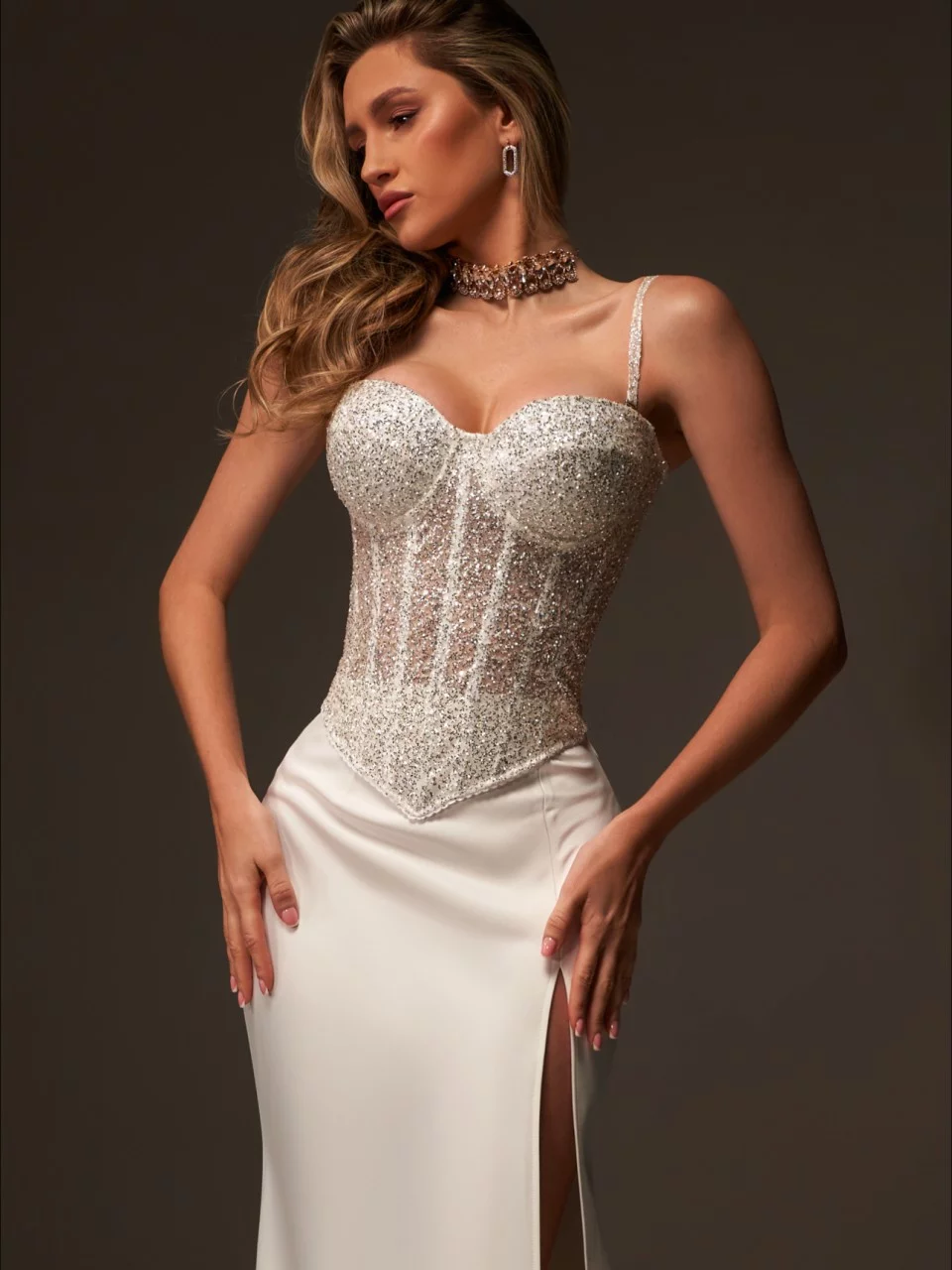
You can purchase the product by clicking on the image Choose your dress |

